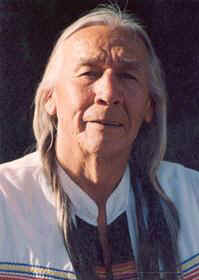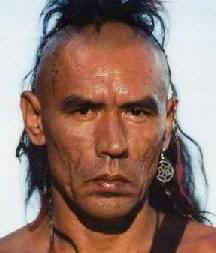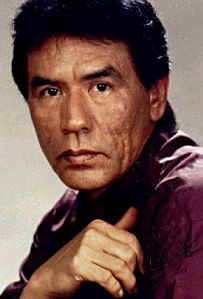|
ANPAO Real Name Occupation: Goddess of dawn Legal Status: Citizen of Shipolo Identity: The general populace of Earth is unaware of Anpao except as a mythological character. Other Aliases: Anpa (Lakota name), Dawn (Iroquois name), Wala (Fox name), Place of Birth: Unrevealed, possibly somewhere in the former Cherokee Territory (modern Tennessee, Mississippi, Alabama, North Carolina and Northern Georgia) Marital Status: Single Known Relatives: Wabasso (father), mother (name unrevealed), Amitolane, Glendenwitha (sisters), Wewonah (maternal aunt), Manabozho, Chibiabos, Coyote (uncles), Onatah (aunt), Mishemoka (maternal grandfather), Hino (brother-in-law), three nephews (names unrevealed), Group Affiliations: The Gods of North America Base of Operations: Shipolo First Appearance: (behind the scenes) Thor #301 History: Anpao is the daughter of Wabasso, a member of the Anasazi, an extra-dimensional race of beings worshipped as gods by the tribes of North America. Worshipped as goddess of the dawn, Anpao was once wooed by the sun-god, Tawa, often according to legend turning her face to meet his arrival on Earth as the rising sun. Anpao was possibly one of the young goddesses who accompanied Onatah, the wife of Manabozho, to seek out and protect the Young Gods, twelve extraordinary youths presented during the Fourth Host of the Celestials to serve as examples of humanity's potential. She was also present when Thor arrived in Shipolo seeking the life force energies required to revive the Asgardians after their battle with the Celestials. Anpao fled Shipolo when Amatsu-Mikaboshi laid siege of the godly realms; her current whereabouts are unknown.
Height: 5' 5" Known Superhuman Powers: Anpao possesses the conventional physical attributes of the North American gods. Like all of the Anasazi, she is extremely long-lived, but she is not immortal. She has aged at an extremely slow rate since reaching adulthood and cannot die by any conventional means. She is immune to all Earthly diseases and is resistant to conventional injury. If she were somehow wounded, her godly life force would enable her to recover with superhuman speed. It would take an injury of such magnitude that it dispersed a major portion of her bodily molecules to cause her a physical death. Even then, it might be possible for a god of significant power, such as Manabozho, or for a number of Anasazi gods of equal power working together to revive her. Anpao also possesses superhuman strength and her Anasazi metabolism provides her with far greater than human endurance in all physical activities. (Anasazi flesh and bone is about three times as dense as similar human tissue, contributing to the superhuman strength and weight of the Native American Gods.) Anpao has limited mystical powers, mostly to conceal her appearance to mortals, by becoming invisible to human eyes and becoming invisible. She is also incredibly fast and can seem to vanish by disappearing at top speed. She also had a quasi-psychic rapport with animals, such as squirrels, rabbits, deer and other woodland creatures. Comments: Anpao has yet to appear in Marvel or DC Comics. Clarifications: Anpao is not to be confused with:
|
|
HASTSEOLTOI Real Name Occupation: Goddess of the hunt Legal Status: Citizen of Shipolo Identity: The general populace of Earth is unaware of Hastseoltoi except as a mythological character. Other Aliases: Pinga (possible Eskimo name) Place of Birth: Somewhere in the former Navaho territory (modern New Mexico and Arizona) Marital Status: Married Known Relatives: Owayodata (father), mother (name unrevealed), Hotamintanio (husband/uncle), Manabozho (grandfather), Onatah (grandmother), Chibiabos, Coyote (grand-uncles), Group Affiliations: The Gods of North America Base of Operations: Shipolo First Appearance: Hastseoltoi has yet to appear in the Marvel or DC Universe. History: Hastseoltoi is the daughter of Nayenezghani, a member of the Anasazi, an extra-dimensional race of beings worshipped as gods by the tribes of North America. Nayenezghani was worshipped as the god of the hunt by the Navaho Indians but was known as Hotamintanio by the Cheyenne Indians. Worshipped as goddess of the hunt, Hastseoltoi was taken as a wife by Thobadzistshin, the god of war, brother of Hotamintanio. It is possible but unconfirmed that Hastseoltoi took over the role as goddess of the hunt to replace her father during his duties defending the Earth from evil spirits and demons intent on destroying it.. In Navaho culture, Hastseoltoi was called upon to help her worshippers become better hunters. She was an exceptional hunter on her own behalf, and according to her worshippers, she was so fleet-footed that she could leave behind the footsteps of a jack rabbit. She was traditionally pictured wearing a quiver and carrying a bow and two arrows.
Height: 6' 0" Known Superhuman Powers: Hastseoltoi possesses the conventional physical attributes of the North American gods. Like all of the Anasazi, she is extremely long-lived, but she is not immortal. She has aged at an extremely slow rate since reaching adulthood and cannot die by any conventional means. She is immune to all Earthly diseases and is resistant to conventional injury. If she were somehow wounded, her godly life force would enable her to recover with superhuman speed. It would take an injury of such magnitude that it dispersed a major portion of her bodily molecules to cause her a physical death. Even then, it might be possible for a god of significant power, such as Manabozho, or for a number of Anasazi gods of equal power working together to revive her. Hastseoltoi also possesses superhuman strength and her Anasazi metabolism provides her with far greater than human endurance in all physical activities. (Anasazi flesh and bone is about three times as dense as similar human tissue, contributing to the superhuman strength and weight of the Native American Gods.) Hastseoltoi is stronger, faster and more agile than most Native American goddesses; her reflexes, equilibrium and stamina are all at superhuman levels. She can run faster and jump higher than normal humans, enabling to overtake deer and rabbits with little effort. She can also seem to vanish at will. Her visual and auditory senses are also exceptionally acute, increasing her hunting skills to extraordinary levels. Abilities: Hastseoltoi is an excellent hunter proficient in a bow and arrow. She can also turn and fire almost any object as an arrow. Weapons: Hastseoltoi is known to carry a bow and a quiver with an endless supply of arrows. Comments: Hastseoltoi has yet to appear in Marvel or DC Comics. |
|
HASTSEZINI Real Name Occupation: God of fire Legal Status: Citizen of Shipolo Identity: The general populace of Earth is unaware of Hastsezini except as a mythological character. Other Aliases: Bitsis Lizi'n (Kisani name), Tcolawitz (Hopi name), The Black Lord Place of Birth: Unknown, possibly Shipolo Marital Status: Unknown, possibly Single Known Relatives: Gitche Manitou (father), Gaea (mother, alias Nokomis), Tonenile, Hastesheltsi, Hastehogan (brothers), Eithinoha (sister), Gaoh, Gohone (nephews), Manabozho, Chibiabos, Wabasso, Coyote (great-nephews), Onatah, Yolkat Estsan (great-nieces), Group Affiliations: The Gods of North America Base of Operations: Shipolo First Appearance: Hastsezini has yet to appear in the Marvel or DC Universes. History: Hastsezini is a member of an ancient race of beings known as the Anasazi who were worshipped as gods among the Native American Indians. According to the Navaho Indians, Hastsezini was one of several gods who helped create the Earth and lead the first Native Americans up from the underworld to the land of the living through a series of interconnected worlds. This legend was repeated by their worshippers as the "Ascent of the Navaho" in oral tradition until the Nineteenth Century when it was finally published. These first Native Americans later became ancestors of all the Pre-Columbian tribes of North America. As god of fire, Hastsezini was also worshipped as a god of stars responsible for setting balls of fire in the sky to light the night sky, but this maybe apocryphal. Hastsezini was later replaced by the god, Wabasso, as god of the night sky. According to legend, Hastsezini was often pictured as being covered in black and became known as the Black Lord. The trickster, Coyote, once came to him to help him hang the stars in the sky, but Hastsezini rebuked him by telling him he had already finished hanging the stars, but Coyote stole his bag. Reaching within it, Coyote found only dust which he cast to the heavens, creating stellar matter and nebulae. The full veracity and facts of this story are unrevealed. Hastsezini was worshipped by numerous Native American tribes on Earth, many of whom had their own names for him. Although largely retired, he still takes interest in mortal affairs, often creating spells and mystical objects for young demigods and mortal heroes who know how to find him.
Height: 6' 2" Strength Level: In his prime, Hastsezini possessed superhuman strength enabling him to lift (press) 50 tons under optimal conditions. He can now lift (press) around 10 tons under optimal conditions. Known Superhuman Powers: Hastsezini possesses the conventional physical attributes of the North American gods. Like all of the Anasazi, he is extremely long-lived, but he is not immortal. He has aged at an extremely slow rate since reaching adulthood and cannot die by any conventional means. He is immune to all Earthly diseases and is resistant to conventional injury. If he were somehow wounded, his godly life force would enable him to recover with superhuman speed. It would take an injury of such magnitude that it dispersed a major portion of his bodily molecules to cause her a physical death. Even then, it might be possible for a god of significant power, such as Manabozho, or for a number of Anasazi gods of equal power working together to revive him. Hastsezini also possesses superhuman strength and his Anasazi metabolism provides him with far greater than human endurance in all physical activities. (Anasazi flesh and bone is about three times as dense as similar human tissue, contributing to the superhuman strength and weight of the Native American Gods.) Hastsezini also has numerous abilities to tap into and manipulate mystical energies, particularly involving conjuring great heat and light. Although he is no longer adept in creating complex spells, in his prime, he might have been equal to such gods like Odin or Zeus. Today, he can conjure light and fire, cast spells on physical objects and imbue mortals with specific powers or abilities. Abilities: In his prime, Hastsezini was a capable warrior, hunter and mediator trained in archery and unarmed combat. Comments: Hastsezini has yet to appear in Marvel or DC Comics. |
|
HIAWATHA Real Name: Haion-Hwa-Tha ("He-Who-Makes-Rivers") Occupation: God of wisdom, law and culture Legal Status: Citizen of Shipolo Identity: The general populace of Earth is unaware of Hiawatha
except as a mythological character. Other Aliases: Ayenwatha, Aiionwatha, Hai Wa'tha (Onondaga name),
Hiawatha The Unifier, Place of Birth: somewhere in the Iroquois Territory (modern
New York, Pennsylvania, Ohio and Michigan) Marital Status: Married Known Relatives: Manabozho (father, alias Mudjekeewis), Wewonah
(mother), Gaoh (paternal grandfather, alias Ebangishimog), Gaea
(maternal grandmother, alias Nokomis), Minnehaha (wife), Hiawatha II
(possible descendant, deceased), Group Affiliation: The Gods of North America Base Of Operations: Mobile First Appearance: "The Song Of Hiawatha" by Henry Wadsworth
Longfellow History: Not much is known about Hiawatha. Although he is considered
a part of the Anasazi, the extra-dimensional race of beings who were
worshipped as gods by the ancient tribes of North America, he is not
technically a deity. According to myths, the birth of Hiawatha was prophesized by Gitche
Manitou, the Great Spirit of the Native Americans, and ancestor of the
Native American gods. Manabozho, the god of sky (known as Mudjekeewis to
the Anishinabe Indians), and his siblings attacked and slew the
mountain-god, Mishemokwa. During the battle, his brother, Wabasso (known
as Wabun to the Anishinabe Indians) fell in love with one of
Mishemokwa's daughters and took her as his wife, making her a
star-goddess. Maslum (known as Coyote to the Iroquios and Kabibonakka to
the Anishinabe Indians), attacked Shingebis, a water-god, who eluded him
in a puff of smoke. Chibabos (known as Shawondasee to the Anishinabe
Indians) fell in love with another daughter who turned herself into
dandelions to avoid him. Wewonah, the last of Mishemoka's daughters,
escaped to Earth for the protection of Gaea, Mother Earth, known to the
Algonquin Indians as Nokomis. She grew into a beautiful young woman, but
several years later, she was seduced by Manabozho under unknown
circumstances. She later gave birth to Hiawatha. In his youth, Hiawatha grew up on Earth and had numerous adventures,
later taking as his wife Minnehaha, a mortal woman living with a tribe
on the shores of Lake Gitche Goomee (modern Lake Superior). According to
myths, he invented written language and discovered corn which he gave as
a gift to the tribes of North America. He also slew Pearl Feather, an
evil mortal shaman. In several stories, Hiawatha is also credited with accepting
Christianity brought to his homeland by Catholic priest reaching his
area, whom he referred to as "Black Robe Priests," but it is
unknown if this is the same Hiawatha or a modern descendant. This modern
Hiawatha became the founder of the Iroquois League the Seneca, Cayuga,
Onondaga, Oneida and Mohawk tribes. Hiawatha's lore is first transcribed
publicly in 1837 by poet Henry Wadsworth Longfellow who wrote it in
trochaic tetrameter, the same meter as the Kalevala, the Finnish epic
reconstructed by Elias Lönnrot, which he had learned some of the
Finnish language while spending a summer in Sweden in 1835. Known Superhuman Powers: Hiawatha possesses the conventional physical
attributes of the North American gods. Like all of the Anasazi, he is
extremely long-lived, but he is not immortal. He has aged at an extremely slow rate since reaching adulthood and
cannot die by any conventional means. He is immune to all Earthly
diseases and is resistant to conventional injury. If he were somehow
wounded, his godly life force would enable him to recover with
superhuman speed. It would take an injury of such magnitude that it
dispersed a major portion of his bodily molecules to cause her a
physical death. Even then, it might be possible for a god of significant
power, such as Manabozho, or for a number of Anazai gods of equal power working together to revive him.
Hiawatha also
possesses superhuman strength and his Anasazi metabolism provides him
with far greater than human endurance in all physical activities.
(Anasazi flesh and bone is about three times as dense as similar human
tissue, contributing to the superhuman strength and weight of the Native
American Gods.) Hiawatha has superhuman strength, speed, reflexes and stamina. He can
cover extraordinary lengths of ground in small periods of time, climb
vertically over ground with great speed and expertise and perform
strenuously for long periods of time without tiring. Abilities: Hiawatha is a capable warrior and hunter. Comments: Hiawatha has yet to appear in Marvel or DC Comics. There is virtually no connection, apart from name, between
Longfellow's hero and the sixteenth-century Iroquois chief Hiawatha who
founded the Iroquois League. Longfellow took the name from works by
Schoolcraft, which he acknowledged as his main sources. In his notes to
the poem, Longfellow cites Schoolcraft as a source for "a tradition
prevalent among the North American Indians, of a personage of miraculous
birth, who was sent among them to clear their rivers, forests, and fishing-grounds,
and to teach them the arts of peace. He was known among different tribes
by the several names of Michabou, Chiabo, Manabozo, Tarenyawagon, and
Hiawatha." In fact, Longfellow's notes make no reference to the Iroquois or the
Iroquois League or to any historical personage. Chief Hiawatha (1525 - 1595) is the founder of the Iroquois League.
Born in New York, he is thought to have been a statesman, lawgiver,
shaman, and unifier who lived around 1570. According to some sources, he
was born a Mohawk and sought refuge among the Onondaga when his own
tribe at first rejected his teachings. His efforts to unite the Iroquois
tribes were opposed by a formidable chieftain, Wathatotarho, whom he
eventually defeated and who killed Hiawatha's daughter in revenge |
|
INKTOMI Real Name Occupation: God of wisdom, language and culture, Patron god of the Lakota Indians Legal Status: Exiled Citizen of Shipolo Identity: The general populace of Earth is unaware of Inktomi except as a mythological character. Other Aliases: Iktomi (original spelling), Ikto, Ictinike, Unktome, Unktomi, Uncta (Choctaw name), The Spider-God Place of Birth: Inyan Mountain near Sundance, Wyoming Marital Status: Unknown, possibly married Known Relatives: Inyan (father), Maka (mother), Unk (step-mother), Iya (half-brother), Gnaski (nephew), Susstinnako (possible wife), Utset, Nowutset (possible daughters), Tawa (possible grandson), Pawa (possible grand-daughter) Group Affiliations: The Gods of North America Base of Operations: Mobile, formerly Shipolo First Appearance: Dances With Demons #1 History: Inktomi is a member of an ancient race of beings known as the Anasazi who were worshipped as gods among the Native American Indians. According to the Lakota Indians, Inktomi is the son of Inyan, a rock-god, who might have been among the older Native American gods, and the older brother of Iya, who was one of several trickster-gods among the Native Americans. Inktomi was worshipped as a spider-god, trickster-spirit and as a culture hero. The Oglala Indians of South Dakota believed Inktomi was the second manifestation of Ksa, the energies of the Cosmic Egg left over from creation. On Earth, Inktomi invented language and stories, names and games. According to ancient myths, Iktomi was stripped of his title because of his troublemaking ways. He was hated by Unk, a water-goddess who Inyan had taken as his wife. Unk was the mother of Iya, from whose incestuous relationship sired Gnaski, who helped Unk to expel Inktomi from the home of the gods. Gnaski became so adept at duplicating Inktomi that the gods were unable to tell the two apart and Inktomi was expelled to Earth in the form of a spider, but he may have regained his true humanoid form sometime later. On Earth, Inktomi was worshipped as a spider-god. He was primarily known for playing games, mostly to relish in the confusion between wisdom and folly rather than actually becoming a malevolent god. His stories were usually told as a way to teach important lessons to Lakota youth. According to myths, Coyote, the god of misfortune, is his accomplice, but he often behaved responsibly and came to the protection of the Lakota people. At some point, Inktomi allied himself with the Clown spirits of the Hopi Indians and granted one of them the power of change. Some years before, Manabozho, the Chieftain of the Anasazi, had granted a Hopi named Natheniel Great Owl the power to walk between Earth and the Spirit Realm. Great Owl was eventually murdered by this Clown demon, and replaced by his grandson, James Owl, as the Ghost Dancer. Inktomi has encountered Ghost Dancer several times, uncertain if they are rivals or allies. According to the Lakota Indians, Inktomi is prophesized to extend his
presence over the land in a huge web. Several mystics believed that this
is a premonition of the modern telephone network system as well as the
Internet and World Wide Web. Known Superhuman Powers: Inktomi possesses the conventional physical attributes of the Gods of North America. Like all Native American Gods, he is extremely long-lived, but he is not immortal. He has aged at a much more slower rate since reaching adulthood and cannot die by any conventional means. He is immune to all Earthly diseases and is resistant to conventional injury. If he were somehow wounded, his godly life force would enable him to recover with superhuman speed. It would take an injury of such magnitude that it dispersed a major portion of his bodily molecules to cause her a physical death. Even then, it might be possible for a god of significant power, such as Manabozho, Raven or for a number of Native American gods of equal power working together to revive him. Inktomi also possesses superhuman strength and his Anasazi metabolism provides him with far greater than human endurance in all physical activities. (Anasazi flesh and bone is about three times as dense as similar human tissue, contributing to the superhuman strength and weight of the Gods of North America.) Inktomi has a number of mystical powers, but his foremost power is his ability to shapeshift and mystically alter his form in front of mortals, but this ability has been restrained since his exile to Earth. On Earth, his appearance was usually that of a spider, but he could take any shape, including that of a human being wearing red, yellow and white paint with black rings around his eyes. He has also the power to make potions that change gods, gain control over people and trick gods and mortals. Abilities: Inktomi is described as a highly charismatic and manipulative personality, capable of manipulating and coercing others, both mortals and gods into following his bidding. Pets: Inktomi represented by the spider Comments: This bio describes Inktomi as he has possibly appeared in the Marvel Universe; although, it has not yet been confirmed if this figure is the Native American god. Inktomi has not yet appeared in DC Comics. Inktomi is often compared to the Ashanti trickster figure Anansi, Yoruba mischief-god Legba and to the Graeco-Roman Hermes. His spider totem also links him to the goddess Athena in the story of Arachne. It is unrevealed if Inktomi has any connection to Susstinnako, the Navaho spider-goddess, grandmother of Tawa and Pawa. |
|
Real Name : OmamamaOccupation: Goddess of love and fertility Legal Status: Citizen of Shipolo Identity: The general populace of Earth is unaware of the existence of Omamama except as a mythological character. Other Aliases: Tunkan (Huron name) Place of Birth: Somewhere in the former Cree Indian Territory (modern Ontario, Manitoba and Quebec) Marital Status: Single Known Relatives: Manabozho (father), Onatah (mother), Chibiabos, Wabasso, Coyote (uncles), Yolkai-Estsan (aunt), Hino, Hotamintanio, Owayodata (brothers), Tawa (half-brother), Pawa (half-sister), Anpa, Glendenwitha (sisters-in-law), Hasteoltoi (niece/sister-in-law), Group Affiliations: The Gods of North America Base of Operations: Shipolo First Appearance: (behind the scenes) Thor #301 History: Omamama is the daughter of Manabozho, Chieftain of
the Anasazi, an extra-dimensional race of beings worshipped as gods by
the tribes of North America, and his wife, Onatah, the maize-goddess.
Omamama was particularly revered by female Native Americans as a
mother-goddess, but her incredible beauty established her as a goddess
of love similar to Aphrodite of the Greeks or
Freia of the Germans.
Responsible for provoking warriors into marriage, she was chosen by
Onatah to protect and conceal the Young Gods, examples of human purity
and potential who were presented by Gaea during the Fourth Host of the
Celestials. Known Superhuman Powers: Omamama possesses the conventional physical attributes of the Native American gods. Like all of the Anasazi, she is extremely long-lived, but she is not immortal like the Olympian gods: she has aged at an extremely slow rate since reaching adulthood and cannot die by any conventional means. She is immune to all Earthly diseases and is resistant to conventional injury. If she were somehow wounded, her godly life force would enable her to recover with superhuman speed. It would take an injury of such magnitude that it dispersed a major portion of her bodily molecules to cause her a physical death. Even then, it might be possible for a god of significant power, such as Manabozho or Raven or for a number of Native American gods of equal power working together to revive her. Omamama also possesses superhuman strength and her Anasazi metabolism provides her with far greater than human endurance in all physical activities. (Anasazi flesh and bone is about three times as dense as similar human tissue, contributing to the superhuman strength and weight of the Native American gods.) Omamama also has certain mystical powers devoted to stirring emotional bonds of attraction between mortals. She can appear invisible, capable of moving among human beings unseen, although she can still be seen by other gods, whether they are members of the Anasazi or not. By whispering spells into the minds of warriors and Indian braves, she can implore any mortal man to relinquish his ways to pursue any woman although this spell can be interceded by that of the war-god, Hotamintanio. Omamama's voice seems enchanted, enabling her to bend any mortal or god to her will. Some gods, such as Hino, Thor and Horus have proven capable of resisting her powerful charisma, although certain gods, like Hercules, with their female pursuits, have proven that much more susceptible. Omamama can also fly and alter her size, sometimes appearing as a giantess on earth. She can transform mortal men into animals, such as rabbits, deer and birds. Pets: Omamama has great rapport with the passive creatures of the earth, such as deer, rabbits, frogs and fish. |
|
Real Name : YetlOccupation: God of water and magic, Trickster-god, Patron god of the Haida and Tsimshian Indians Legal Status: Citizen of Shipolo Identity: The general populace of Earth is unaware of Raven except as a mythological character. Other Aliases: Crow (Iroquois), Chulyen (Tanaina), Dotson' Sa ("Great Raven"), Hemaskas (Cherokee), Guguyni ( Nootka), Maninga (Mandan), Nankilstlas ("He Whose Voice Must Be Obeyed"), Nascakiyetl ("Raven-at-the-Head-of-Nass"), Kwekwaxa'We (Kwakiutl), Taqlikic ("Hammer Father"), Tulugaak (Inuit), Txamsem (Tsimshian), Water (Navaho), We-gyet/Wigit (Haida), Yehl ( Tlingit), Place of Birth: possibly Seana ("The Land of Spirits") Marital Status: Married Known Relatives: Kitkaositiyiqa (possible father), Logobola (brother), Pawa (possible foster mother), Manabozho (possible maternal grandfather), Group Affiliations: The Gods of North America Base of Operations: Nascakiyetl Lodge, located at the head of the Nass River in Northern British Columbia, Canada First Appearance: Raven has yet to appear in Marvel or DC Comics. History: Raven is a member of an extra-dimensional race of beings known as the Anasazi who were worshipped as gods by the tribes of North America. Not much is known about his origins. According to myths, Raven is the son of a mortal named Kitkaositiyiqa and originally came from a Land of Spirits, which could be Seana, the Native American afterlife. He accidentally created the Earth when a clod of soil he was carrying was accidentally dropped into the ocean and became the Earth. In Algonquin legend, Raven had retrieved this clod of Earth on behalf of Manabozho, the Chieftain of the Native American Gods, in order to re-create the Earth after the flood. According to myths, Gitche Manitou ("Great Spirit"), the ancestral spirit of the Anasazi, originally stored all of creation within cedar boxes and gave them as gifts to the animal-spirits of Earth. Raven was one of these beings, which could make him a son of Gitchie Manitou. One of the animal-spirits, Sea Gull, however, coveted and hid away the box containing light. Raven tried tricking him into releasing light, but Sea Gull refused. Raven finally became frustrated and tortured Sea Gull with a thorn through his foot until he dropped the box from which spilled the sun, moon and stars, thereby creating day and night, seasons and the calendar. According to myth, Raven is the patron god of the Haida and Tsimshian tribes who once owned the territory along the coast of Western Canada and the United States from Northern British Columbia to Oregon. Unlike the Native American gods, Raven lived on Earth at a lodge located at the source of the Nass River in what is now modern British Columbia. He was served by two artificial beings named Adawulcanak and Tliewatuwadjigican whom he had created to serve him as manservant. According to myths, Raven discovered the first humans hiding in a clam shell on the sea shore and brought them berries and salmon to care for them. The Haida and Tsimshian tribes worshipped Raven as their creator-spirit and as a trickster-god. Looking down on Earth, he eventually noticed the Tsimshian Indians were living without fire to use as light and he visited heaven in order to steal fire to give them. According to myth, all the fire and light that existed was being hoarded by a powerful chief. (Whether this was Manabozho, the Chieftain of the Native American Gods, is unrevealed.) Raven encountered the moon-goddess, the daughter of this unidentified god. (It is unknown if this was Pawa, the moon-goddess, and daughter of Manabozho.) As she was drinking water, Raven turned himself into a cedar leaf, slipping himself into her drink and was swallowed. He was eventually reborn as the infant Yehl. As an infant, Yehl's screams were so great that the Chief gave him a number of toys to sate his boredom. According to the Tsimshian Indians, these toys consisted of the moon and stars, which Yehl quickly tired of and scattered to the heavens. The only thing that seemed to hold his interests was fire which the Chief hesitantly produced to entertain him, but once he produced it, Yehl transformed back to Raven and escaped back to Earth to give it to the Tsimshian Indians or to hang as the sun in the sky for all of them. (In another version, Yehl is a young god who stole the sun after the Chief told him where it was hidden.) The actual facts of this account are unknown; this story may be apocryphal or an allegory for Raven's importance to the Tsimshian Indians. Raven and the moon-goddess eventually went to war with each other,
and under unknown circumstances, Raven conquered the sea shore from her.
Although worshipped as a Trickster-god, he was not an evil or malevolent
deity like Coyote of the Algonquin gods of the east. He had a
potentially estranged and competitive relationship with his brother,
Logobola, a god of mischief, who was always playing tricks and practical
jokes. Once as Raven tried to quench his thirst from the Nass River,
Logobola conjured a fog and hid its location from his brother long
enough to scoop it up and hide it from him. The full motivations of this
story are unrevealed. Known Superhuman Powers: Raven possesses the conventional physical attributes of the Gods of North America. Like all Native American Gods, he is extremely long-lived, but he is not immortal. He has aged at a much more slower rate since reaching adulthood and cannot die by any conventional means. He is immune to all Earthly diseases and is resistant to conventional injury. If he were somehow wounded, his godly life force would enable him to recover with superhuman speed. It would take an injury of such magnitude that it dispersed a major portion of his bodily molecules to cause her a physical death. Even then, it might be possible for a god of significant power, such as Manabozho or for a number of Native American gods of equal power working together to revive him. Raven also possesses superhuman strength and his Anasazi metabolism provides him with far greater than human endurance in all physical activities. (Anasazi flesh and bone is about three times as dense as similar human tissue, contributing to the superhuman strength and weight of the Gods of North America.) Raven also has numerous abilities to tap into and manipulate mystical energies, possibly on par with or superior to Manabozho. It is known that he can change and alter his form into anything from a splinter of wood, a cedar leaf or to a large black bird resembling a crow or raven. He can also cast spells and enchantments. Raven can also change mortals into animals, such as dogs, and create artificial sentient beings, such as Adawulcanak and Tliewatuwadjigican. His full range of powers are unrevealed. Comments: Raven has yet to appear in Marvel or DC Comics In Marvel Comics, Raven has been confused with the fictional deity, Hodiak, who according to the Thor/Hercules Encyclopedia Mythologica, also was known by the Inuit name, Tulugaak. Hodiak is not an actual mythological figure; he is a fictional character of the Marvel Universe. Chulyen is also the name of a bird-demon in X-Men #357 in the Marvel Universe; it is uncertain if this is Raven or one of his creations. |
|
Real Name : WabassoOccupation: God of night Legal Status: Citizen of Shipolo Identity: The general populace of Earth is unaware of Wabasso except as a mythological character. Other Aliases: Wabus, Wabun (alternate spellings), Jibayabooz (Anishaabe name), Place of Birth: Unknown, possibly Shipolo Marital Status: Married Known Relatives: Goah (father), Awenhai (mother), Manabozho, Chibiabos, Coyote (brothers), Onatah, Yolkai Estsan (sisters-in-law), wife (name unrevealed), Amitolane, Glendenwitha, Anpao, (daughters), Mishemoka (father-in-law, possibly deceased), Hino, Tawa, Owayodata, Hotamintanio, Hiawatha (nephews), Omamama, Pawa (neices), Group Affiliations: The Gods of North America Base of Operations: Shipolo First Appearance: Wabasso has yet to appear in Marvel or DC Comics History: Wabasso is a member of the Anasazi, an extra-dimensional race of beings who were worshipped as gods by the tribes of North America. Not much is known about him except that he was one of four sons of Gaoh, the god of winds, and brother to the gods Manabozho, Chibabos and Coyote. Manabozho was the youngest of the four brothers, exiled to Earth by Coyote's duplicity and lived along mortal man. Manabozho rescued the animals on Earth and the first Native Americans on Earth on a great tree during a flood and became the Great Spirit of the Native American gods. In doing so, he united the squabbling Anasazi chieftains in one pantheon. One of whom was Mishemoka, a mountain-god, who Wabasso helped to overthrow, eventually taking one of Mishemoka's daughters as a wife and goddess of the stars. Wabasso was known by several different names by his worshippers on Earth. To his worshippers, Wabasso was represented by a rabbit fleeing the rays of Manabozho as the Navaho sun-god Tshohanoi at sunrise; his daughters staying behind to meet Manabozho returning to the mortal realm. Manabozho later surrendered this role to his son, Tawa, the sun god. Tawa romanced several of Wabasso's daughters as a result, eventually learning the ire of Pawa, the goddess of the moon, his wife. It is possible but unconfirmed that Wabasso took over the worship rites as god of night from Hastesezini, a much older god of fire known to the Navaho Indians, but this is confirmed. Wabasso was god of the night sky, believed responsible for separating night and day and creating seasons.
Height: 6' 2" Known Superhuman Powers: Wabasso possesses the conventional physical attributes of the Gods of North America. Like all Native American Gods, he is extremely long-lived, but he is not immortal. He has aged at a much more slower rate since reaching adulthood and cannot die by any conventional means. He is immune to all Earthly diseases and is resistant to conventional injury. If he were somehow wounded, his godly life force would enable him to recover with superhuman speed. It would take an injury of such magnitude that it dispersed a major portion of his bodily molecules to cause her a physical death. Even then, it might be possible for a god of significant power, such as Manabozho, Raven or for a number of Native American gods of equal power working together to revive him. Wabasso also possesses superhuman strength and his Anasazi metabolism provides him with far greater than human endurance in all physical activities. (Anasazi flesh and bone is about three times as dense as similar human tissue, contributing to the superhuman strength and weight of the Gods of North America.) Comments: Wabasso has yet to appear in the Marvel or DC Universe. |






